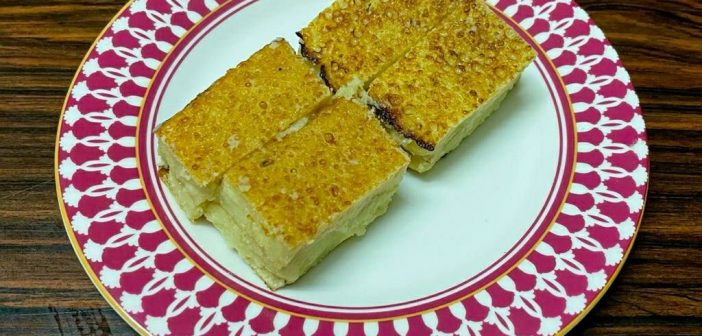India boasts a rich tapestry of culinary delights, and sweets occupy a place of special significance. Among these treasures lies Sarbhaja, a Bengali confection that tantalizes taste buds and evokes a sense of nostalgia. This article delves into the fascinating world of Sarbhaja, exploring its origins, variations, historical significance, and the cultural traditions surrounding this delectable sweet.
Origins and History: A Legacy Steeped in Tradition
The birthplace of Sarbhaja is believed to be Krishnanagar, a town in West Bengal. Historical accounts suggest its emergence sometime during the 18th or 19th century. Some theories link its creation to the skilled sweet-makers of the region, who experimented with innovative techniques to utilize excess milk cream. Others attribute its origin to the royal kitchens of Bengal, where culinary masters crafted exquisite delicacies. Regardless of its exact origin, Sarbhaja has become a beloved sweet, cherished for generations in Bengali households.
A Symphony of Flavors: The Essence of Sarbhaja
The essence of Sarbhaja lies in its simplicity. Made primarily from milk cream, sugar, and a touch of cardamom, it embodies the concept of “less is more.” The preparation process involves slow simmering of full-cream milk until a thick layer of cream forms on the surface. This cream is then meticulously collected, layered, and cooked further until it reaches the desired consistency – neither too dry nor excessively moist. Finally, the squares of creamy goodness are deep-fried to a golden brown perfection and immersed in a fragrant sugar syrup.
Variations on a Theme: Exploring the World of Sarbhaja
While the core recipe remains unchanged, Sarbhaja boasts a few regional variations:
-
Shorbhaja: This variant, prevalent in some parts of Bengal, incorporates a slightly different technique. Here, the collected cream is shaped into small balls before being fried and dipped in syrup.
-
Mishti Doi Sarbhaja: This innovative take incorporates mishti doi, a sweet fermented yogurt, into the cream layer, adding a unique tangy twist to the traditional recipe.
A Feast for the Senses: The Allure of Sarbhaja
The charm of Sarbhaja lies not only in its taste but also in its texture and visual appeal. The golden-brown exterior gives way to a soft, melt-in-the-mouth creaminess, punctuated by the subtle sweetness of the syrup. The subtle hint of cardamom adds a touch of complexity, creating a symphony of flavors that lingers on the palate.
Where to Find this Bengali Delight:
-
Krishnanagar: The birthplace of Sarbhaja remains the undisputed champion for enjoying the authentic experience. Renowned sweet shops in Krishnanagar, like Adhar Ch Das & Sons, have been crafting this sweet for generations.
-
West Bengal: Travelers venturing beyond Krishnanagar can find Sarbhaja in sweet shops across West Bengal. Look for shops specializing in Bengali sweets or simply ask for “Shorbhaja” or “Sarbhaja.”
-
Online Retailers: The growing popularity of Bengali sweets has led to online retailers offering Sarbhaja. However, the experience might not be as fresh as buying directly from a local shop.
Beyond the Sweet: Sarbhaja and Bengali Culture
Sarbhaja transcends its culinary significance to become an integral part of Bengali culture. It is a staple offering during festivals like Durga Puja and Kali Puja, gracing the puja thali (offering platter) and symbolizing prosperity and sweetness. During weddings and other celebratory occasions, Sarbhaja finds its place on the dessert platter, signifying the start of a joyous occasion. Sharing Sarbhaja fosters a sense of community and togetherness, making it more than just a sweet; it’s a thread that binds generations and celebrates life’s milestones.
Enjoying Sarbhaja: The Bengali Way
To truly appreciate Sarbhaja, embrace it the Bengali way. Savor it warm, allowing the flavors to bloom on your palate. Pair it with a cup of strong, hot tea for a perfect contrast of textures and temperatures. Traditionally, Sarbhaja is often served at the end of a meal, leaving a lingering sweetness that marks the culmination of a delightful culinary experience.
Conclusion: A Legacy Enduring
Sarbhaja, a testament to Bengali culinary ingenuity, is more than just a sweet. It embodies tradition, cultural significance, and the warmth of shared experiences. As generations continue to cherish this delectable treat, Sarbhaja’s legacy endures, reminding us that the simplest pleasures in life can be the most enduring. So, the next time you encounter this Bengali treasure, take a moment to appreciate its history, savor its unique flavors, and let it transport you to the heart of Bengali culture.





